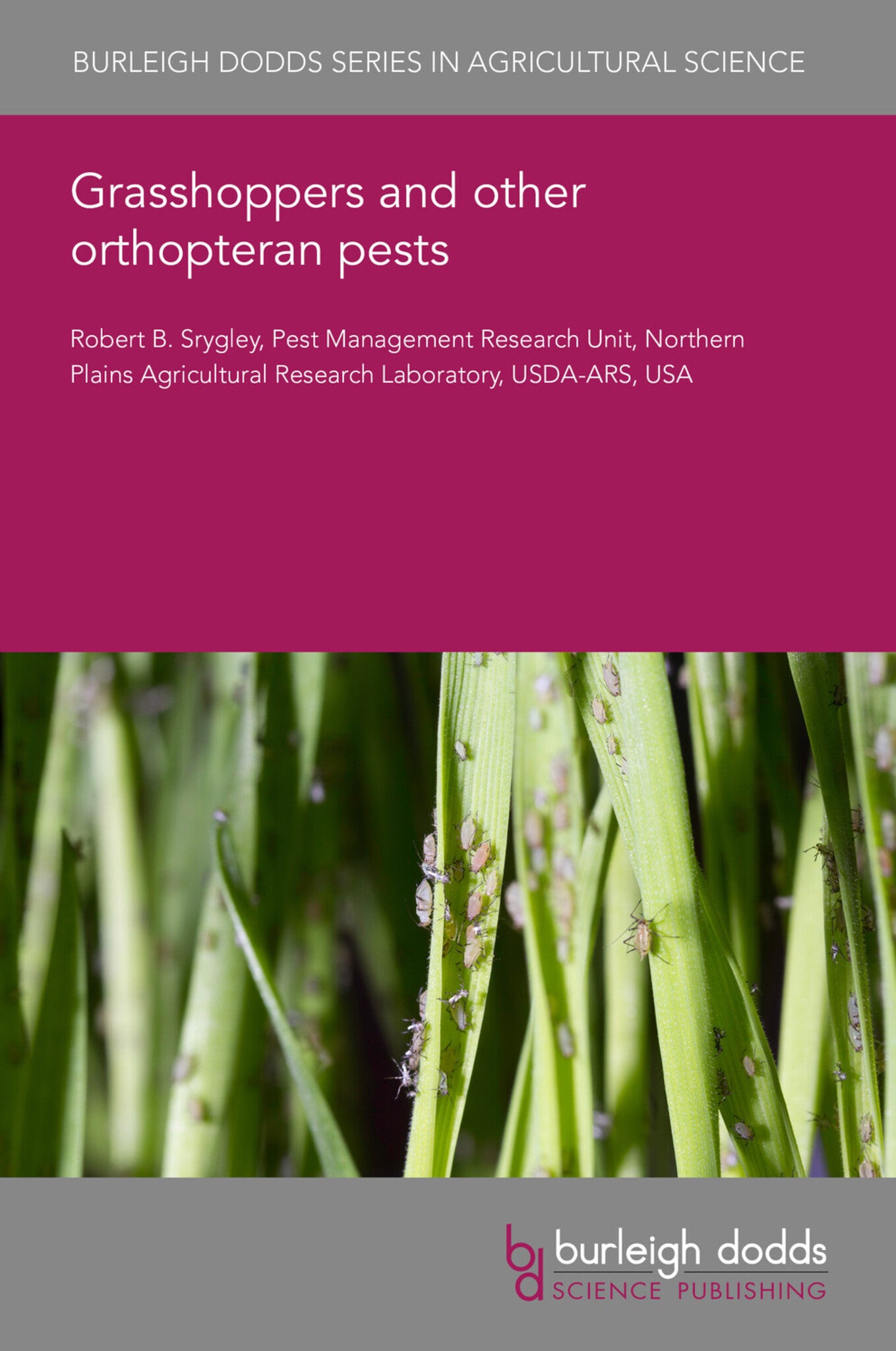We're sorry. An error has occurred
Please cancel or retry.
Grasshoppers and other orthopteran pests

Some error occured while loading the Quick View. Please close the Quick View and try reloading the page.
Couldn't load pickup availability
- Format:
-
01 May 2023

Grasshoppers, including locusts, and katydids are some of the most destructive pests in the world. Because they typically feed on a wide range of plants and migrate into cereal crops, consistent monitoring over vast areas is required to provide sufficient warning of population outbreaks. The long term cycling of populations can also result in relaxation of surveying efforts and loss of key knowledge, which challenge efforts to restore control during increases in population abundance. Diet is an important determinant of migratory behavior en masse, and diet also plays an important role in the insects’ defenses against microbes. Microbial application for locust control, in particular, is expanding. Understanding basic biology, improved outreach to remote areas for surveying, and tracking of migratory movements will all assist in improving forecasting and suppression of pest Orthoptera. Long distance movement of the pests makes national and international funding and coordination paramount for global food security.

TECHNOLOGY & ENGINEERING / Pest Control, Pest control / plant diseases, TECHNOLOGY & ENGINEERING / Agriculture / Sustainable Agriculture, TECHNOLOGY & ENGINEERING / Agriculture / Agronomy / Crop Science, Agronomy and crop production, Sustainable agriculture, Agricultural science

- 1 Introduction
- 2 Grasshoppers, locusts and katydid pests
- 3 Surveying over varied habitats to monitor population expansion and migration
- 4 Nutrient availability and orthopteran outbreaks
- 5 Effective means of preventing and suppressing orthopteran outbreaks
- 6 Use of orthopteran pests for food or animal feed
- 7 Climate and Orthoptera populations
- 8 Conclusion
- 9 Future trends in research
- 10 Where to look for further information
- 11 Acknowledgements
- 12 References



